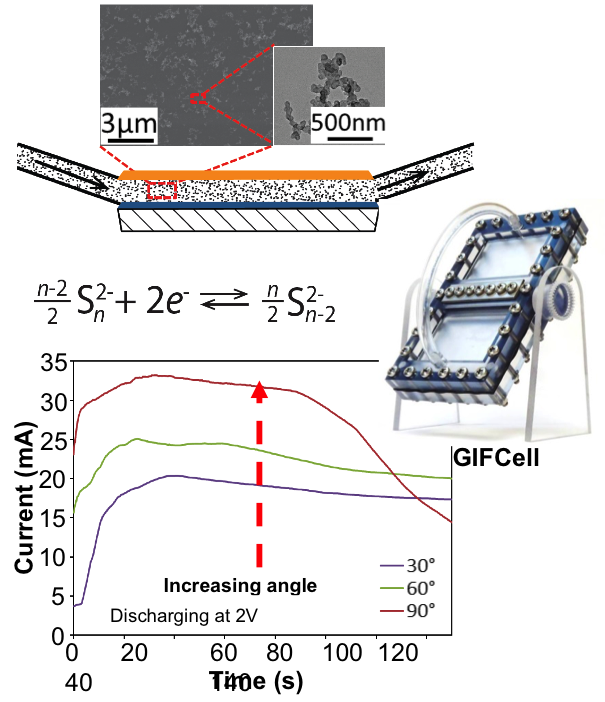
Scientific Achievement
- Created novel electronically conductive flow battery electrodes using nanoscale percolation phenomena
- Demonstrated in lithium polysulfide cathode 5x the capacity of a conventional solution/current collector; 1/300th the pumping pressure
- Demonstrated novel low-dissipation pumpless flow battery concepts such as the gravity-induced flow cell (GIFCell) (multiple patents pending)
Significance and Impact
- Energy-dense flow electrodes invariably have high viscosity and are non-Newtonian; often have yield stress
- The “infinite current collector” innovation increases charge transfer rates for flow electrodes based on solutions, precipitation reactions, and suspensions
- Higher energy density with flowability enables alternative device designs of lower cost, greater simplicity/scalability
Research Details
- Electronic percolation achieved at <1 vol% carbon concentration and reaches 18 mS/cm at 2 vol%; ionic/electronic transference numbers of 0.5.
- Lithium polysulfide flow electrodes of 2.5-8 M S/L using TEGDME solvent with 1M LiTFSI and 1 wt% LiNO3
- Stationary, conventional flow, and gravity-fed lithium semi-flow cells used.
Work performed at Massachusetts Institute of Technology (JCESR Collaborator). Frank Y. Fan, William H. Woodford, Zheng Li, Nir Baram, Kyle C. Smith, Ahmed Helal, Gareth H. McKinley, W. Craig Carter, and Yet-Ming Chiang “Polysulfide Flow Batteries Enabled by Percolating Nanoscale Conductor Networks,” Nano Letters, 5 March 2014.
DOI: 10.1021/nl500740t

